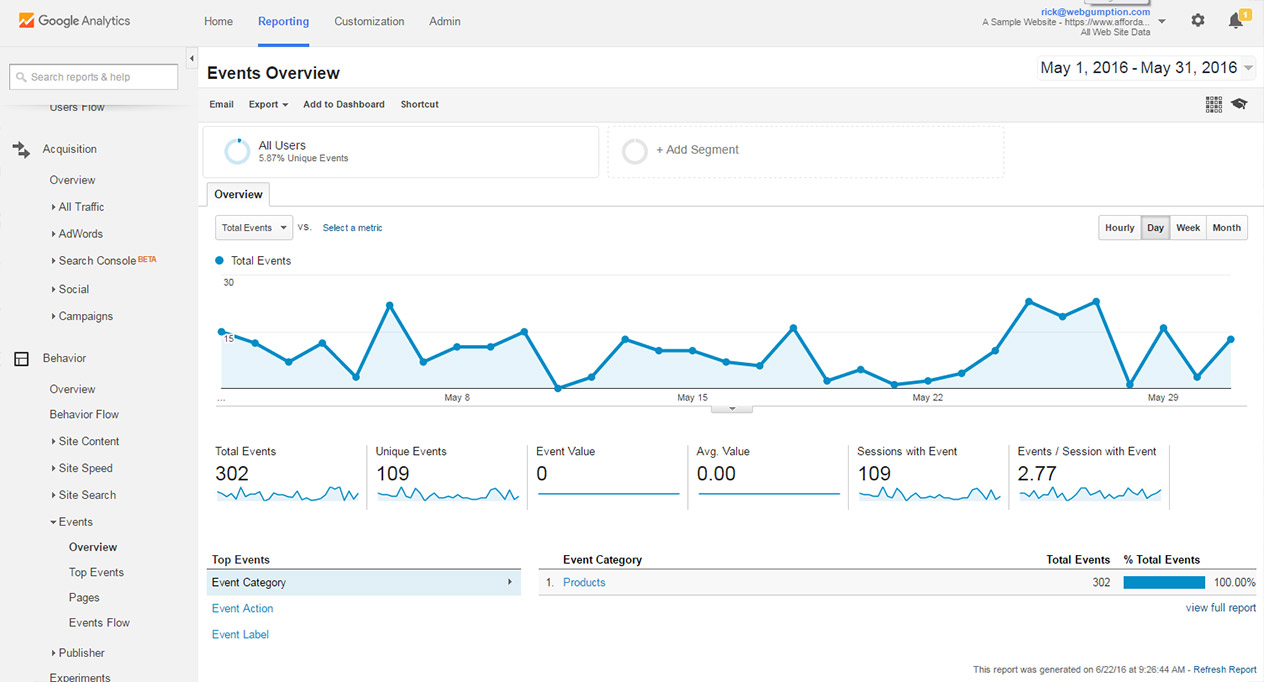Google Analytics Event Tracking Fundamentals Explained
Wiki Article
7 Simple Techniques For Google Analytics Event Tracking
Table of ContentsGetting The Google Analytics Event Tracking To WorkGoogle Analytics Event Tracking Fundamentals ExplainedNot known Facts About Google Analytics Event TrackingThings about Google Analytics Event Tracking5 Simple Techniques For Google Analytics Event Tracking8 Simple Techniques For Google Analytics Event Tracking

If you're mosting likely to establish occasion tracking manually, after that you're going to have to include some extra code to the elements you wish to gather data from. The code you're going to collaborate with will certainly look something such as this: There are four components within that code fragment that you're going to require to specify on your own: occasion, Group, event, Activity, event, Label and occasion, Value.
As you can see, 2 of these are called for (classification and activity) while tag and value are optional. All of it depends upon the sort of information you desire communicated back to Google Analytics when a user clicks on the specified aspect (Google Analytics Event Tracking). It will certainly be a lot easier to specify these parts if you analyse your site and make a decision which elements/actions you wish to track
An Unbiased View of Google Analytics Event Tracking
Currently, you'll be asked to specify the and and you'll intend to choose from the drop-down menu that appears when you click on. This will certainly raise the very same occasion monitoring elements we checked out earlier, which you'll need to fill up out. As soon as you have actually specified these, you can move down to the second box and pick the trigger that will certainly terminate your tag.On the next screen, you'll additionally have an area for naming your trigger and, if you click on package, you'll see a checklist of the various triggers you can choose. In this situation, we want to select and then select the alternative listed below. You'll establish the trigger to only fire when a component is clicked with an helpful site URL that includes the.
Simple - Event tracking! Event monitoring gives you a photo of just how users engage with your internet site and business. Check out on as we check out every little thing you need to understand, including what it is, why you must track occasions, how to manage events information, and various other pertinent FAQs you may have.
Google Analytics Event Tracking - The Facts
You can switch in between your event categories, actions, and tags in the Top Events report. The i was reading this Occasion Pages record shows the pages where occasions are activated.Events in Google Analytics have 4 main components. Google Analytics makes use of these codes to track individual interactions and group them right into event records (Google Analytics Event Tracking).
A list of the criteria you can track on your website is on the. After checking all needed areas, you can click "X" to shut the window and return to the Summary menu on the.
Google Analytics Event Tracking for Dummies

Choosing "False" will protect against that session from being a bounce. If you have not done so, you may need to set up click here for info a variable in the Google Analytics Settings box. Click "New Variable ..." if you can't discover one to select. Hereafter, enter your GA monitoring ID in the Monitoring ID area.
To do this, comply with the next series of activities: After setting up the fields, select the "Triggering" area. When configuring your brand-new trigger, click the "+" switch, then the "pencil" button, after that select your trigger kind.
Fascination About Google Analytics Event Tracking

When it comes to knowing which sections and components are directing clients through your conversion funnel, you still won't recognize. Without occasion tracking, GA reports will only count gos to as single-page sessions, also if customers spend a great deal of time on one web page and engage with it dramatically (and a bounce).
But how does event tracking accomplish this?Single-page sessions understood as bounces begin and end on the very same web page. Without occasion monitoring, GA will certainly identify a user's check out as a bounce if they don't navigate to another page, regardless of how they interact with it. A video-rich web page can have a greater bounce price if events are not tracked.
The 30-Second Trick For Google Analytics Event Tracking
However, for GA to take event hits into account when measuring bounce rates, you have to pick "Non-interaction occasion" as "False" during the GTM configuration. Setting "event goals" with event action is an outstanding way to track individual activities you value extremely, such as new lead entries or clicks on a telephone call to action.Report this wiki page